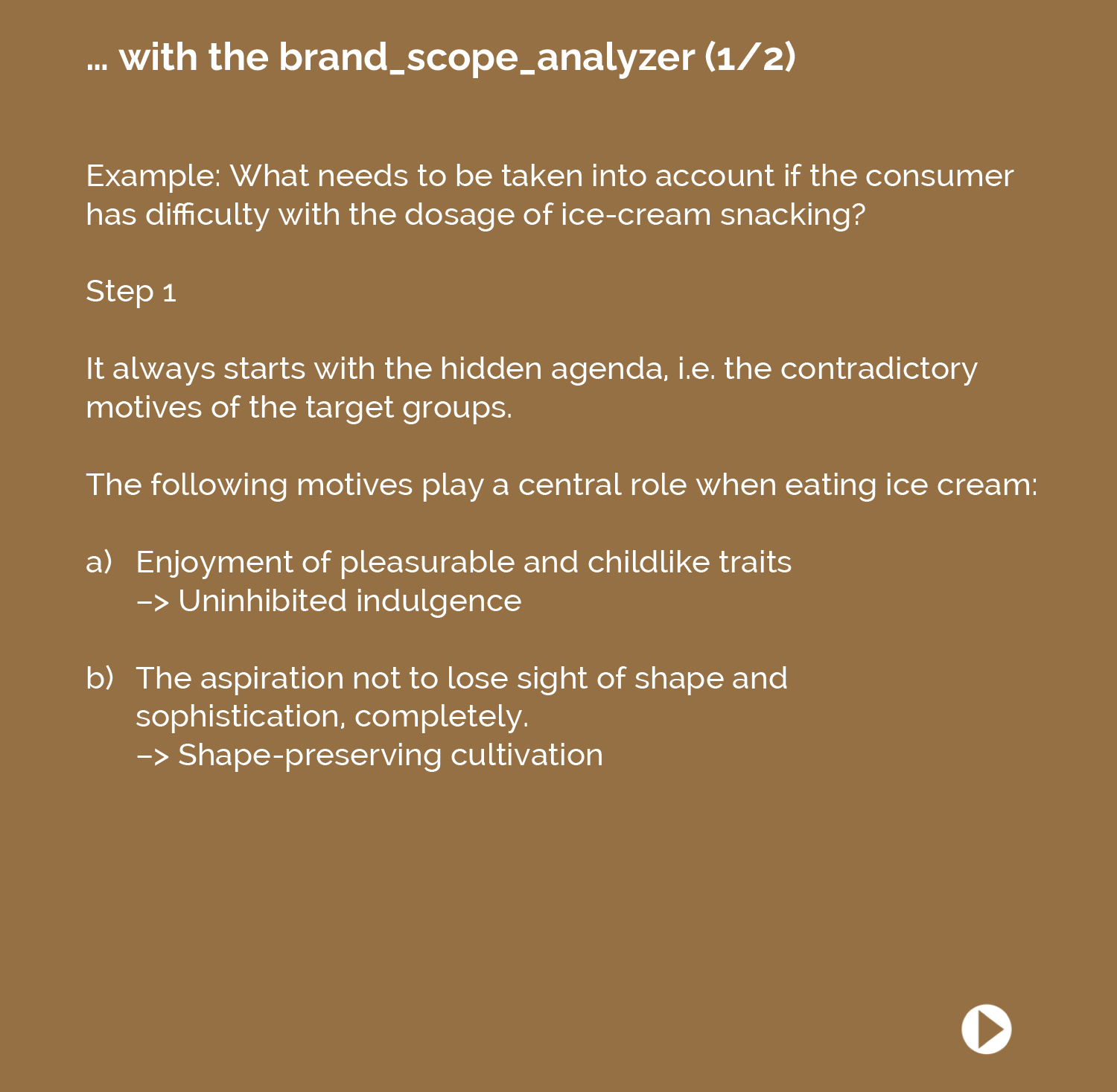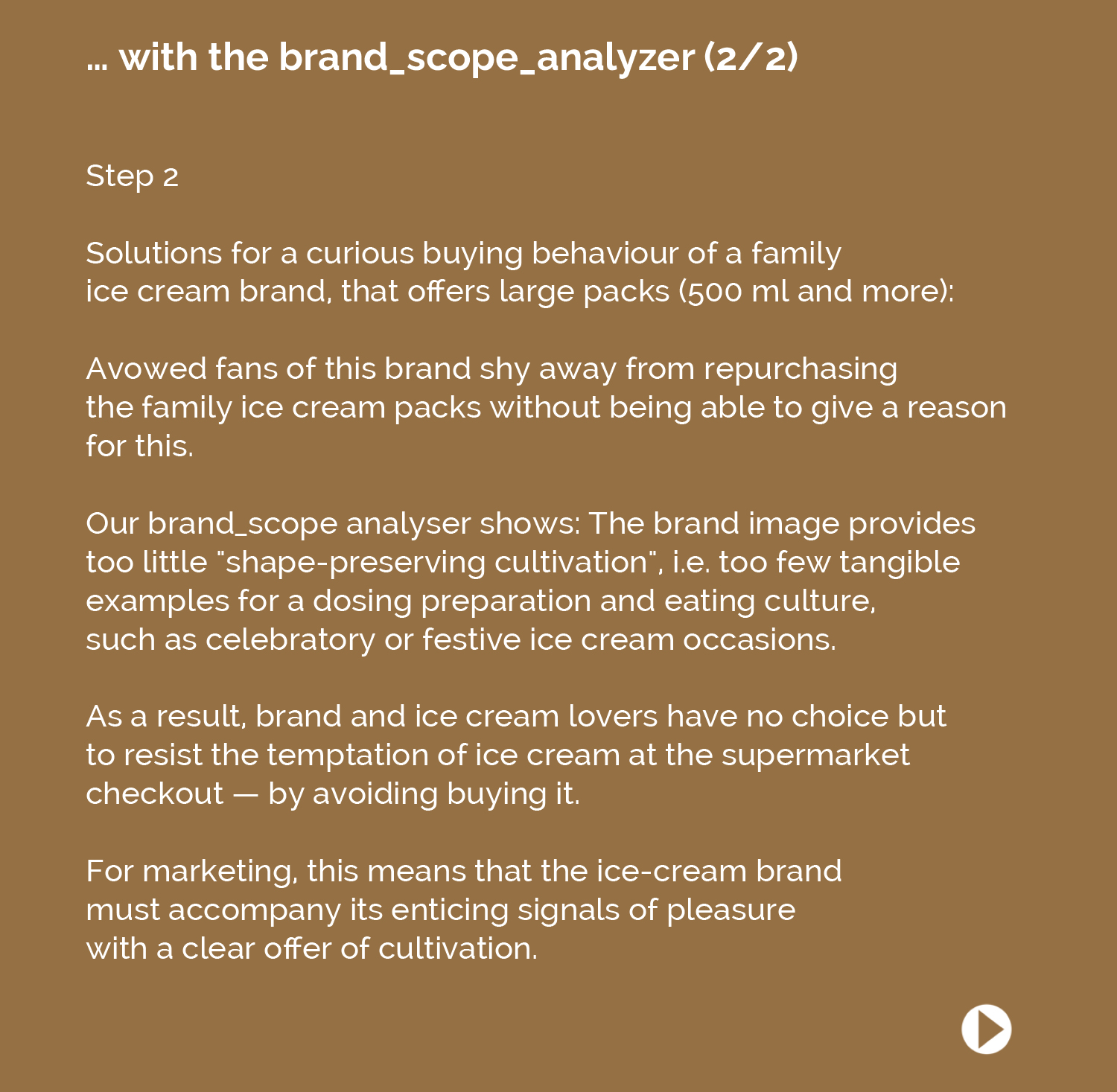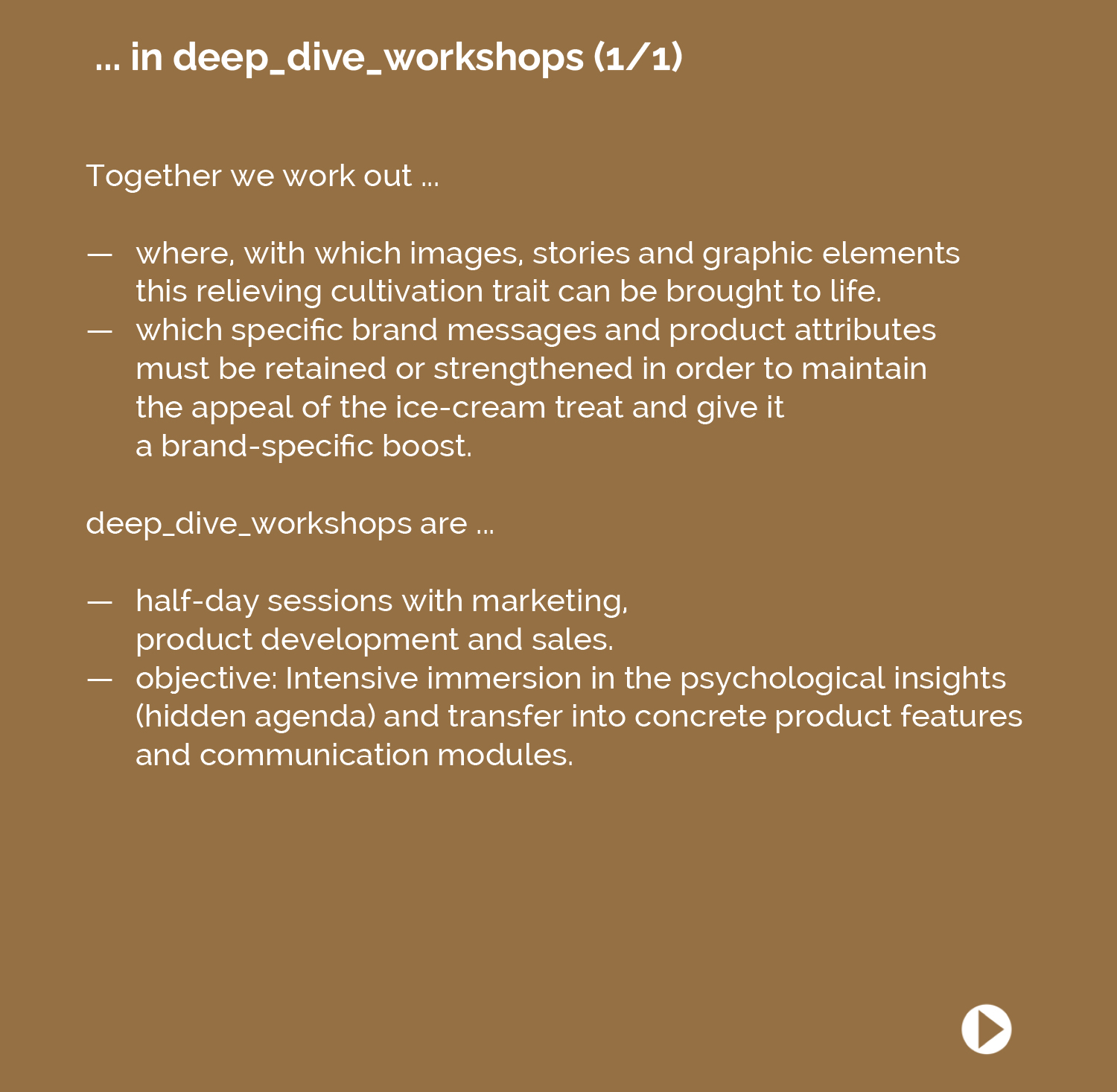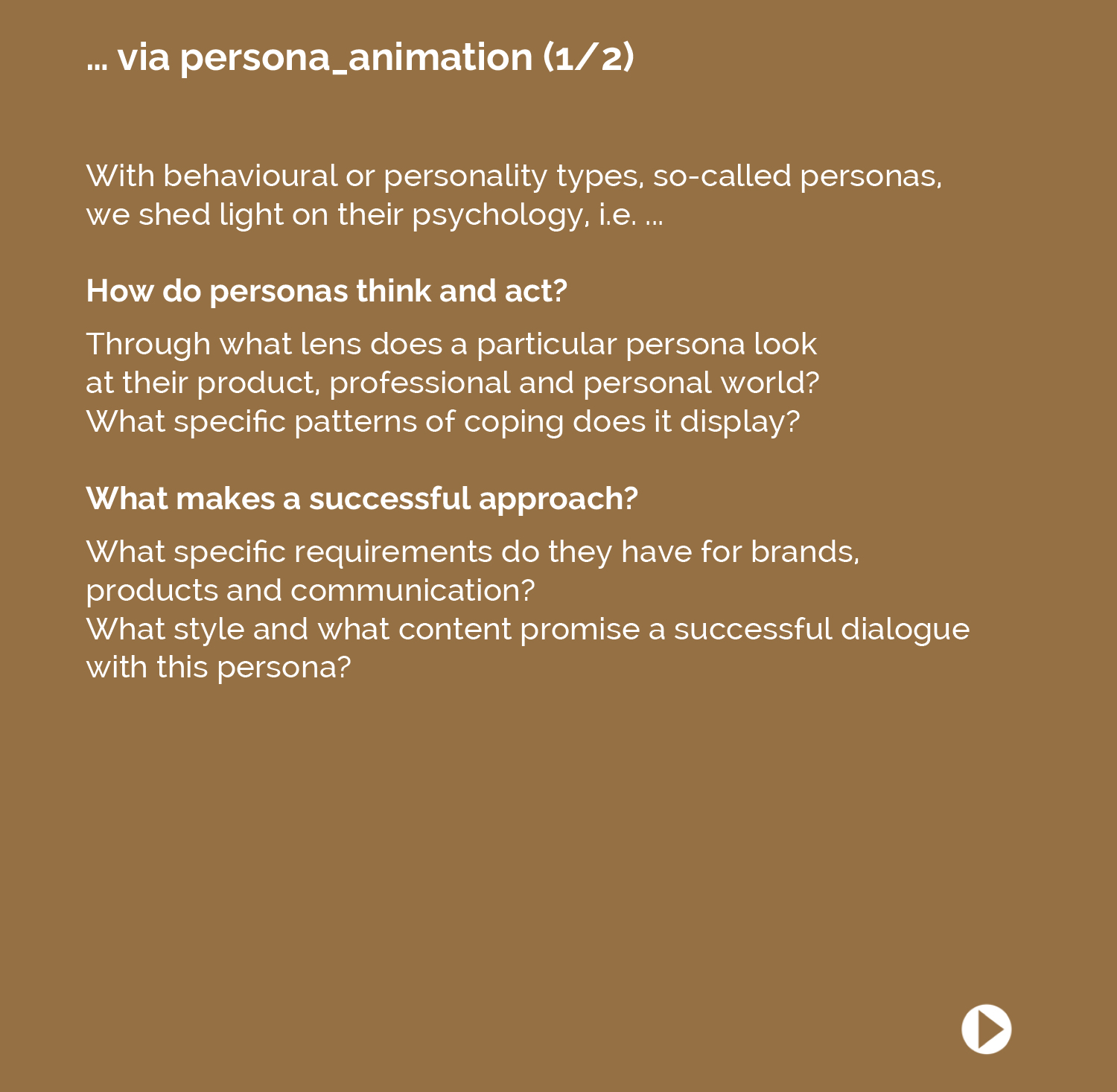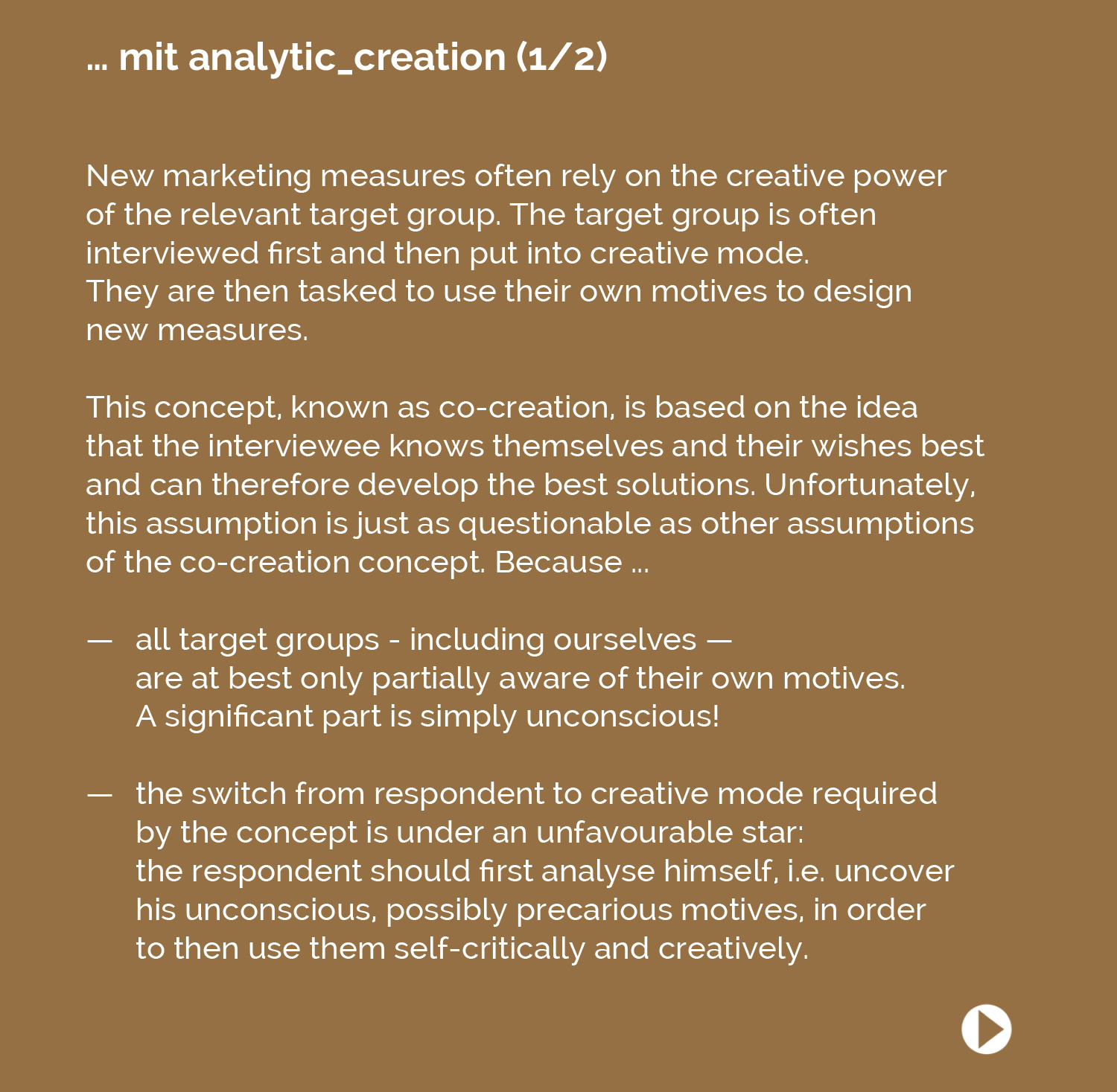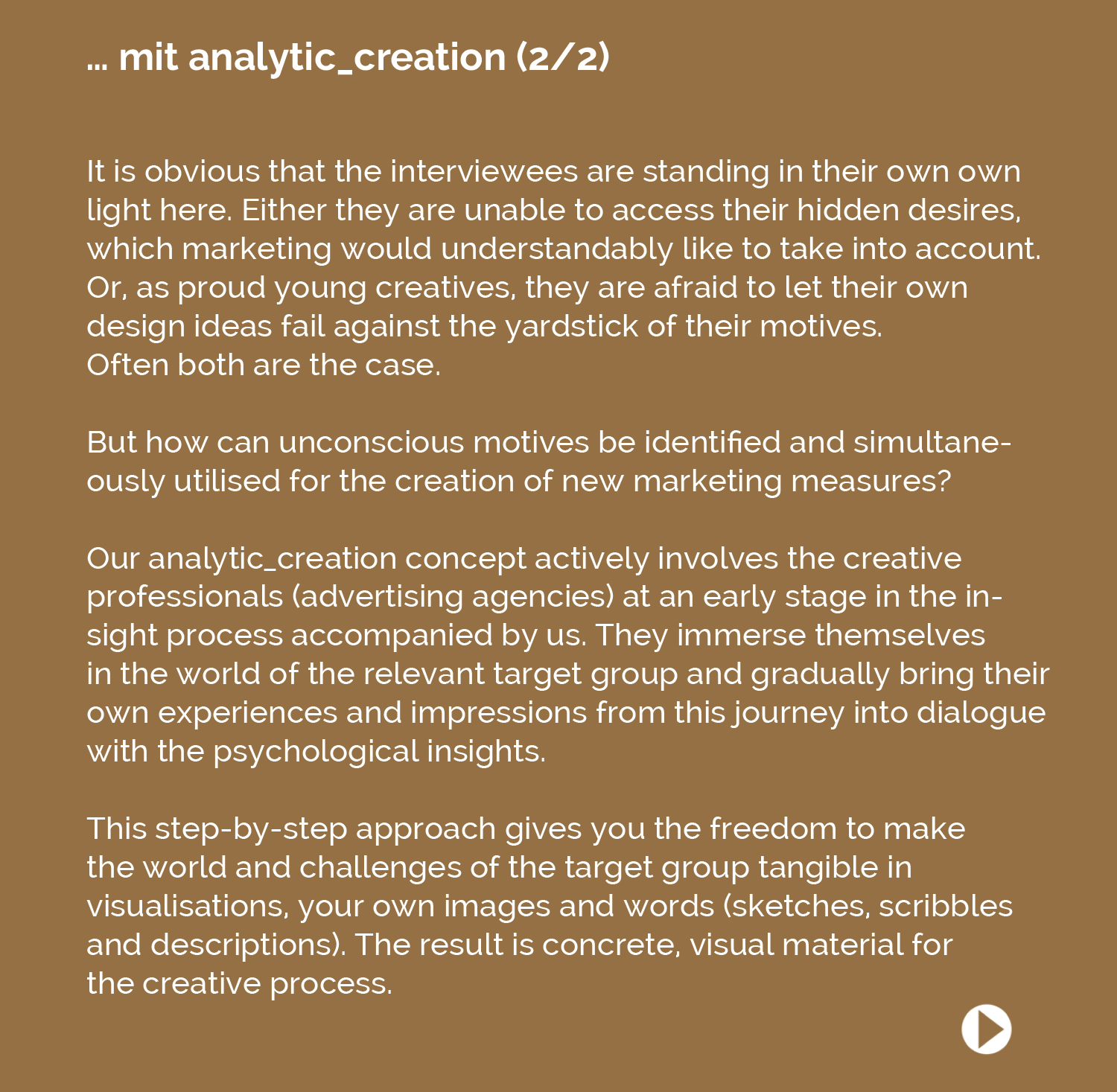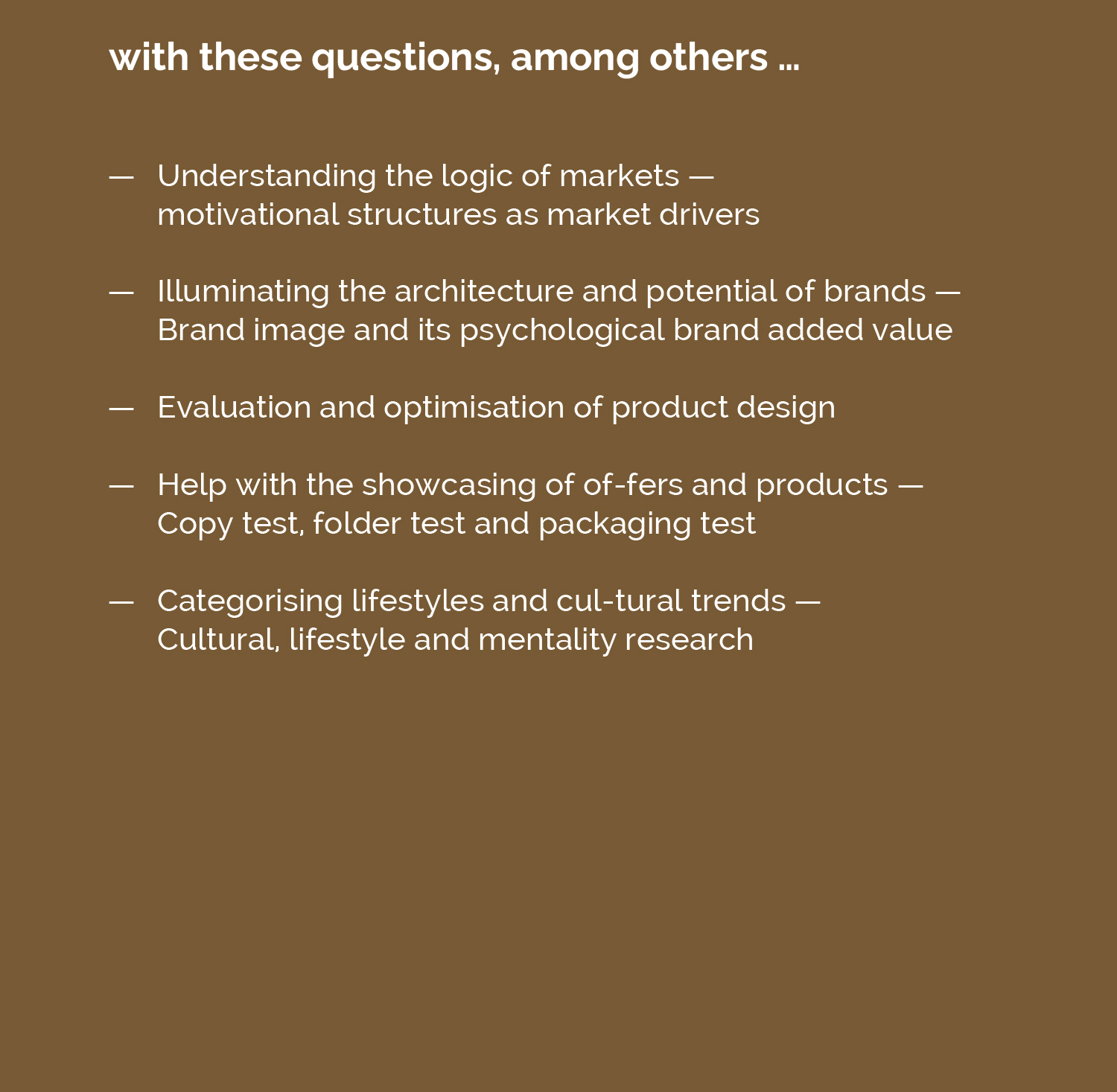HOW WE WORK
Turning insights into solutions.
HOW WE WORK
Step 1
Bringing the hidden agenda of the target groups to light. In other words, explain the logic of unconscious, contradictory motives.
Step 2
Together with our clients, we develop products and services that touch the heart of the target groups, their hidden agenda – step by step, word by word.
HOW WE WORK
Step 1
Bringing the hidden agenda of the target groups to light. In other words, explain the logic of unconscious, contradictory motives.
Step 2
Together with our clients, we develop products and services that touch the heart of the target groups, their hidden agenda – step by step, word by word.
THAT WORKS

… with the brand_scope_analyzer (1/2)
Example: What needs to be taken into account if the consumer has difficulty with the dosage of ice-cream snacking?
Step 1
It always starts with the hidden agenda, i.e. the contradictory motives of the target groups.
The following motives play a central role when eating ice cream:
a. Enjoyment of pleasurable and childlike traits
–> Uninhibited indulgence
b. The aspiration not to lose sight of shape and sophistication, completely.
–> Shape-preserving cultivation
THAT WORKS
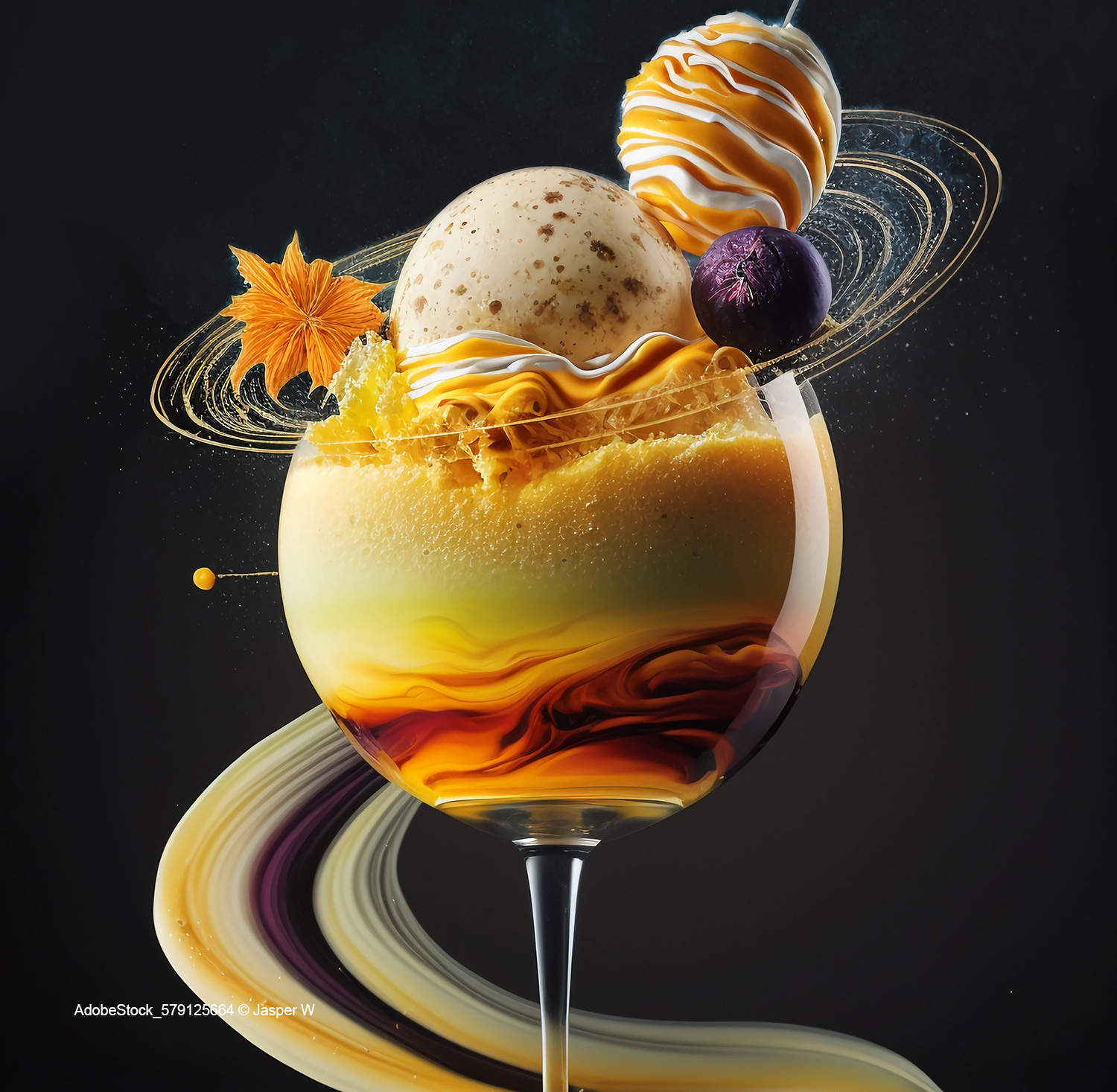
… with the brand_scope_analyzer (2/2)
Step 2
Solutions for a curious buying behaviour of a family ice cream brand, that offers large packs (500 ml and more):
Avowed fans of this brand shy away from repurchasing the family ice cream packs without being able to give a reason for this.
Our brand_scope analyser shows: The brand image provides too little “shape -preserving cultivation”, i.e. too few tangible examples for a dosing preparation and eating culture, such as celebratory or festive ice cream occasions.
As a result, brand and ice cream lovers have no choice but to resist the temptation of ice cream at the supermarket checkout – by avoiding buying it.
For marketing, this means that the ice-cream brand must accompany its enticing signals of pleasure with a clear offer of cultivation.
THAT WORKS

… in deep_dive_workshops (1/1)
Together we work out …
- where, with which images, stories and graphic elements this relieving cultivation trait can be brought to life.
- which specific brand messages and product attributes must be retained or strengthened in order to maintain the appeal of the ice-cream treat and give it a brand-specific boost.
deep_dive_workshops are …
- half-day sessions with marketing, product development and sales.
- objective: Intensive immersion in the psychological insights (hidden agenda) and transfer into concrete product features and communication modules.
THAT WORKS

… via persona_animation (1/1)
With behavioural or personality types, so-called personas, we shed light on their psychology, i.e. …
How do personas think and act?
Through what lens does a particular persona look at their product, professional and personal world?
What specific patterns of coping does it display?
What makes a successful approach?
What specific requirements do they have for brands, products and communication?
What style and what content promise a successful dialogue with this persona?
THAT WORKS

… via persona_animation (2/2)
What type-specific characteristics need to be taken into account? So what is the individual persona_scope?
What are the persona’s specific gain and pain points?
What type-specific dos and don’ts for marketing and sales result from this?
What intersections do our depth-psychological fbk personas have, e.g. with the common DISG types*?
Welche Schnittmengen weisen unsere tiefenpsychologischen fbk-Personas z.B. mit den gängigen DISG-Typen* auf?
fbk personas give just as much weight to needs profiles, including emotional and unconscious aspects, as to behavioural styles. DISC types focus strongly on behavioural styles – dominant, impatient behaviour, for example, contrasts with a neatly structured appearance.
*„Emotions of Normal People“, Marston 1928 (well known as red, yellow, green, blue types)
THAT WORKS
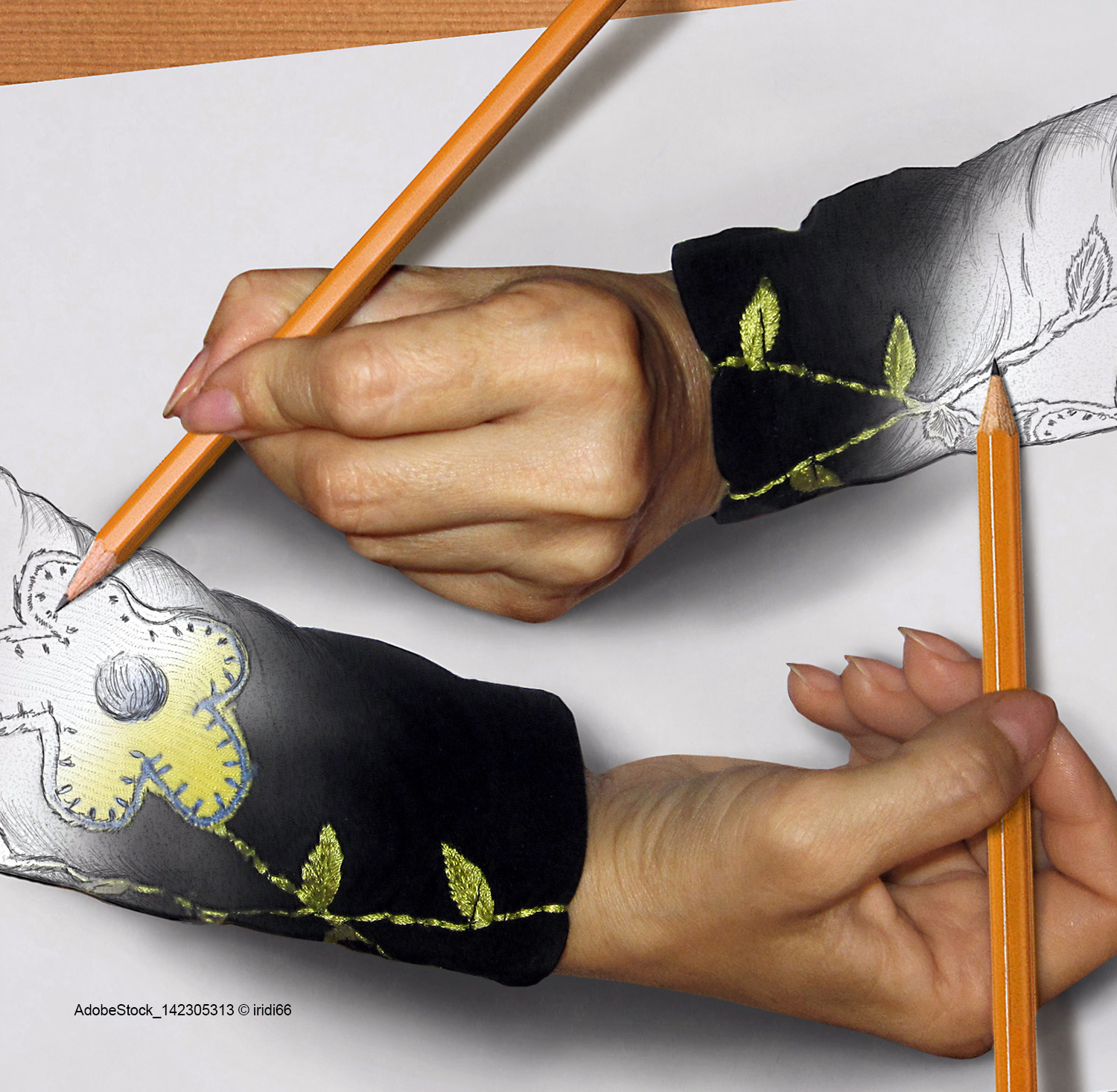
… with analytic_creation (1/2)
New marketing measures often rely on the creative power of the relevant target group. The target group is often interviewed first and then put into creative mode. They are then tasked to use their own motives to design new measures.
This concept, known as co-creation, is based on the idea that the interviewee knows themselves and their wishes best and can therefore develop the best solutions. Unfortunately, this assumption is just as questionable as other assumptions of the co-creation concept. Because …
- all target groups – including ourselves – are at best only partially aware of their own motives. A significant part is simply unconscious!
- the switch from respondent to creative mode required by the concept is under an unfavourable star: the respondent should first analyse himself, i.e. uncover his unconscious, possibly precarious motives, in order to then use them self-critically and creatively.
THAT WORKS

… with analytic_creation (2/2)
It is obvious that the interviewees are standing in their own own light here. Either they are unable to access their hidden desires, which marketing would understandably like to take into account. Or, as proud young creatives, they are afraid to let their own design ideas fail against the yardstick of their motives. Often both are the case.
But how can unconscious motives be identified and simultaneously utilised for the creation of new marketing measures?
Our analytic_creation concept actively involves the creative professionals (advertising agencies) at an early stage in the insight process accompanied by us. They immerse themselves in the world of the relevant target group and gradually bring their own experiences and impressions from this journey into dialogue with the psychological insights.
This step-by-step approach gives you the freedom to make the world and challenges of the target group tangible in visualisations, your own images and words (sketches, scribbles and descriptions). The result is concrete, visual material for the creative process.
HOW WE HELP
with these questions, among others
- Understanding the logic of mar-kets – motivational structures as market drivers
- Illuminating the architecture and potential of brands
- Brand image and its psychologi-cal brand added value
- Evaluation and optimisation of product design
- Help with the showcasing of of-fers and products – Copy test, folder test and packaging test
- Categorising lifestyles and cul-tural trends
- Cultural, lifestyle and mentality research



